Another early start with a 8 am departure but we had time to do a bit on the computer before settling into the coach. We are now near the front as the seat-rotation policy is basically working.
As we left Budapest, Anita told us of her experiences as a child after the borders reopened
. Locals would drive to Vienna to shop and take photos of the electronic goods, the supermarkets, imported fruit etc. The roads would be full of the communist cars, Trabants, Skodas… Often a Trabby would return with a refrigerator on the roof. She said they bought fruit back for her Grandmother and she didn't know what it was so put it in a vase.
The previous day she had told us about being christened in secret as a child. Her mother and grandmother had gone to a small village to have this done. Her father worked for a government corporation and would have been dismissed if this had become known.
She told us average East European wages are 600 euro per month with a pension of 200-300 euro – considerably less then in the west. However university education still seems to be free and so is healthcare, although it is not always good.
We passed 2 other cities in the distance on our drive to the border
. The first had been a big industrial city under the communists. The second one, (Gyer), is an historical city from the 5th century with a big university centre and a big Audi plant in it. The Danube also flows through this city.
The border comfort stop was fun at a Le Marche. When you went to the WC you got a voucher for 100 florints which could be spent in the shop so we wandered around with a voucher and another 200 florints each – buying apple chips and a couple of chocolate bars. You had up to a year to redeem your 'pee’ voucher. We have never had so much fun spending less than $5. We left Hungary with 30 florints.
The motorway in Austria was fenced to protect the wildlife. There were also bridges over the motorways built especially for the wildlife i.e. it was covered in bush and trees etc with no obvious pathway across. The road to Wien (Austrain spelling of Vienna) was very, very flat. The heat haze seemed to be the only thing limiting the view
.
Anita told us that Austria has a population of 8m, 1.6m living in Vienna. As they were united for the 19th and early 20th century there was a lot of links with things we had seen in Budapest.
We had time for lunch and a wander before the city tour. We had salads at a local fish chain for lunch then walked around part of the city. We went into a major Swasozki (sp?) store but there was nothing I really, really wanted – even with the tax back…..except maybe a cat with a ball, but the price was high and it looked a bit fragile. There were wonderful tigers, lions and cheetahs but the price had an extra 0 for our budget. We admired the old buildings and also the marklin trains, the porcelain and enamel ware.
Then back to the coach for the local tour. We started with a drive around and we saw:
the Danube canal – a natural side arm now concreted in;
a boat with a pool as a public pool;
an artificial beach;
a Ferris wheel that is the oldest viewing wheel in the world;
the many green roofs are oxidized copper;
the horses in the horse and cart rides had poo bags – which the horses don’t like
. (Too much information –JB);
the Opera House uses the equivalent of 30,000 houses of power.
We then started the walking part of the tour and it was a struggle. It was hot, the guide had a strong accent and we had head sets that I had to use in my weak ear so none of this helped. But also we found the buildings, though lovely, started to merge into a sameness. It registered later that they had almost all been built in the same time period – when the Austro/Hungarian Empire was at its heights.
We started the walking tour at the Hofburg (Palace). Most of the houses were built at the time the ring road was built. They are of limestone which blackens and is costly to clean so there is a mixture of the white, grey and black. Information signs were clear as they were in white with flags to show where they were. The upper parts of the buildings were mainly apartments for civil servants. We saw the yellow Swiss courtyard – Marie Theresa’s favourite colour was yellow. The Vienna Boys Choir are based here and nearby we saw (and smelt) the stables for the Spanish Riding school. Roman ruins had been excavated in the area. We were told a lot more about the buildings history but it just washed over me.
We walked past the oldest sweet shop in Vienna and on to a statue to commemorate the Black Plague
. It shows the Black Death being defeated by angels. There are lots of lovely statues but some have more of a story than others. In front was a busker dressed appropriately – there was also a Cinderella and a dancer although it was not clear why.
I did enjoy looking at St Stephens Cathedral (the same St Stephen from Budapest) and being cooler inside probably helped. It was started in the 13th century and finished in the 15th. There were to be 2 towers but only one was completed. The Bell weighs 24 tonnes and was made from the metal from Turkish cannons. It fell and had to be recast and it is in the uncompleted tower. 250,000 tiles cover the cathedral. Outside there is a new building covered in glass which reflects the cathedral – the Viennese first hated it but are now very happy with it.
The ceilings inside were a surprise because they were not decorated. However having a guide allowed us to see other things in detail. We went first to the original pulpit
. It dated from the 1480’s and was very finely carved. It showed the 4 ‘humours’, and also had snakes and other ‘loathsome’ animals carved near the bottom.
The original organ was the 2nd biggest in the world with over 10,000 pipes but it was going to be too costly to restore so there is a new one with 5,500 pipes. It cost so much that later they thought the restoration may have been cheaper.
We went to the woman’s side (it was historically segregated) which dated to the 15th century. The wise men represented there are interesting because one is shown as a young man, one as an older man and one as a very old man. This was very clear when it was pointed out – otherwise I am sure we would never have noticed.
In 1945 the roof collapsed and so the stained glass in the cathedral is new. The usable older glass was moved to the main altar. The various provinces paid for specific parts of the restorations and the roof tiles were bought by individual donations
. The original pulpit had fortunately been covered during the war so was safe.
There was a lovely statue of Madonna and Child with an interesting background. It had been donated by a Countess in the 14th century. Reputedly she had falsely accused her maid of theft – when the piece of jewelry was found she donated the statue in penance.
Finally we were told that Mozart had been married here and both his 4th and 6th children baptized here.
We had time for a cooling gelato on the way back to the coach and the aircon was very welcome as we drove to our hotel. This was a 30 min train drive out of town. It seems to be mainly a conference centre and the lobby area was very busy the whole time. In NZ when planning, it had seemed a good ides to train back into the city but now we were grateful for the break in a cooler area. There was a pool but it was about a 5 min walk inside the hotel to get to it. So …. we walked to the nearby mall, found a lot of the usual mall type shops and a food court, where we had Wiener Schnitzel, potatoes, salad and dessert with cokes for 12 euro (because it was close to closing food was reduced by 50%).Not quite the way we thought we would dine in Vienna but it suited us. Then back to the hotel to use the early night to catch up blogs, photos etc before we used the free laptop area, before retiring to bed.
A waltz in Vienna
Tuesday, June 08, 2010
 Vienna, Vienna, Austria
Vienna, Vienna, Austria
Other Entries
-
3Beijing or bust...
May 2316 days prior Beijing, Chinaphoto_camera7videocam 0comment 2
Beijing, Chinaphoto_camera7videocam 0comment 2 -
4On the Wall
May 2415 days prior Beijing, Chinaphoto_camera12videocam 0comment 4
Beijing, Chinaphoto_camera12videocam 0comment 4 -
5Hitting the streets of Beijing
May 2514 days prior Beijing, Chinaphoto_camera13videocam 0comment 0
Beijing, Chinaphoto_camera13videocam 0comment 0 -
6Goodbye Beijing hello Cologne
May 2613 days prior Beijing to Cologne, Chinaphoto_camera3videocam 0comment 1
Beijing to Cologne, Chinaphoto_camera3videocam 0comment 1 -
7A visit to the Dom
May 2712 days prior Cologne, Germanyphoto_camera11videocam 0comment 1
Cologne, Germanyphoto_camera11videocam 0comment 1 -
8Eau de Cologne
May 2811 days prior Cologne, Germanyphoto_camera5videocam 0comment 0
Cologne, Germanyphoto_camera5videocam 0comment 0 -
9Beer and Chocolate
May 2910 days prior Cologne, Germanyphoto_camera8videocam 0comment 2
Cologne, Germanyphoto_camera8videocam 0comment 2 -
10Training to Frankfurt
May 309 days prior Frankfurt, Germanyphoto_camera5videocam 0comment 2
Frankfurt, Germanyphoto_camera5videocam 0comment 2 -
11"Ich bin ein Berliner"
May 318 days prior Berlin, Germanyphoto_camera11videocam 0comment 4
Berlin, Germanyphoto_camera11videocam 0comment 4 -
12Undercover in Berlin
Jun 017 days prior Berlin, Germanyphoto_camera11videocam 0comment 2
Berlin, Germanyphoto_camera11videocam 0comment 2 -
13Poles apart
Jun 026 days prior Warsaw, Polandphoto_camera7videocam 0comment 0
Warsaw, Polandphoto_camera7videocam 0comment 0 -
14Markets and memories
Jun 035 days prior Warsaw, Polandphoto_camera16videocam 0comment 0
Warsaw, Polandphoto_camera16videocam 0comment 0 -
15Personal thoughts on Warsaw
Jun 044 days prior Krakow, Polandphoto_camera0videocam 0comment 3
Krakow, Polandphoto_camera0videocam 0comment 3 -
16To Krakow via Auchwitz
Jun 044 days prior Krakow, Polandphoto_camera10videocam 0comment 0
Krakow, Polandphoto_camera10videocam 0comment 0 -
17A Krakow rendezvous
Jun 053 days prior Krakow, Polandphoto_camera13videocam 0comment 1
Krakow, Polandphoto_camera13videocam 0comment 1 -
18Romance on the Danube
Jun 062 days prior Budapest, Hungaryphoto_camera10videocam 0comment 0
Budapest, Hungaryphoto_camera10videocam 0comment 0 -
19At large in Budapest
Jun 071 day prior Budapest, Hungaryphoto_camera13videocam 0comment 1
Budapest, Hungaryphoto_camera13videocam 0comment 1 -
20A waltz in Vienna
Jun 08 Vienna, Austriaphoto_camera10videocam 0comment 2
Vienna, Austriaphoto_camera10videocam 0comment 2 -
21Vienna Paradox
Jun 091 day later Vienna, Austriaphoto_camera0videocam 0comment 0
Vienna, Austriaphoto_camera0videocam 0comment 0 -
22Proceeding to Prague
Jun 091 day later Prague, Czech Republicphoto_camera6videocam 0comment 1
Prague, Czech Republicphoto_camera6videocam 0comment 1 -
23The beauty of Prague
Jun 102 days later Prague, Czech Republicphoto_camera17videocam 0comment 0
Prague, Czech Republicphoto_camera17videocam 0comment 0 -
24Munchen mini stay
Jun 113 days later Munich, Germanyphoto_camera8videocam 0comment 1
Munich, Germanyphoto_camera8videocam 0comment 1 -
25The Romantic Road
Jun 124 days later Frankfurt, Germanyphoto_camera13videocam 0comment 0
Frankfurt, Germanyphoto_camera13videocam 0comment 0 -
26Meeting Margo in Marburg
Jun 135 days later Marburg, Germanyphoto_camera6videocam 0comment 0
Marburg, Germanyphoto_camera6videocam 0comment 0 -
27Out and about in Marburg
Jun 146 days later Marburg, Germanyphoto_camera6videocam 0comment 0
Marburg, Germanyphoto_camera6videocam 0comment 0 -
28The football in Marburg
Jun 157 days later Marburg, Germanyphoto_camera2videocam 0comment 0
Marburg, Germanyphoto_camera2videocam 0comment 0 -
29Exploring Hesse
Jun 168 days later Marburg, Germanyphoto_camera14videocam 0comment 1
Marburg, Germanyphoto_camera14videocam 0comment 1 -
30South to the Alsace
Jun 179 days later Mittelbergheim, Francephoto_camera6videocam 0comment 1
Mittelbergheim, Francephoto_camera6videocam 0comment 1 -
31Vins des Pay
Jun 1810 days later Mittelbergheim, Francephoto_camera6videocam 0comment 1
Mittelbergheim, Francephoto_camera6videocam 0comment 1 -
32Strasbourg and Beyond
Jun 1911 days later Mittelbergheim, Francephoto_camera14videocam 0comment 0
Mittelbergheim, Francephoto_camera14videocam 0comment 0 -
33Back to Bodensee
Jun 2012 days later Meersburg (Bodensee), Germanyphoto_camera5videocam 0comment 0
Meersburg (Bodensee), Germanyphoto_camera5videocam 0comment 0 -
34Exploring Bodensee
Jun 2113 days later Meersburg (Bodensee), Germanyphoto_camera15videocam 0comment 0
Meersburg (Bodensee), Germanyphoto_camera15videocam 0comment 0 -
35Tratorria da Nando
Jun 2214 days later Barcarola, Italyphoto_camera9videocam 0comment 1
Barcarola, Italyphoto_camera9videocam 0comment 1 -
36Where eagles dare
Jun 2315 days later Barcarola, Italyphoto_camera8videocam 0comment 2
Barcarola, Italyphoto_camera8videocam 0comment 2 -
37Conquering the Valdastico hairpins
Jun 2416 days later Barrcarola, Italyphoto_camera11videocam 0comment 0
Barrcarola, Italyphoto_camera11videocam 0comment 0 -
38On the road with Nico
Jun 2517 days later Barcarola, Italyphoto_camera18videocam 0comment 0
Barcarola, Italyphoto_camera18videocam 0comment 0

 Vienna, Vienna, Austria
Vienna, Vienna, Austria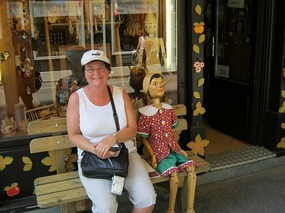

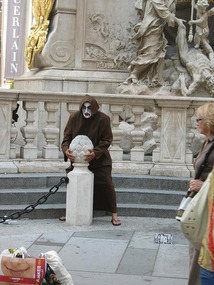
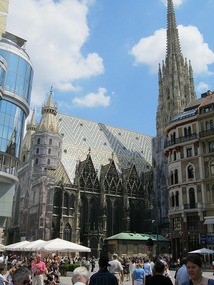
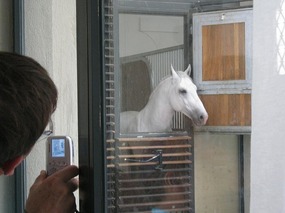
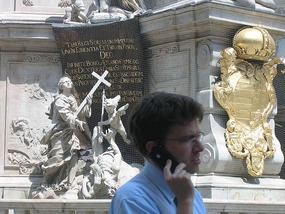
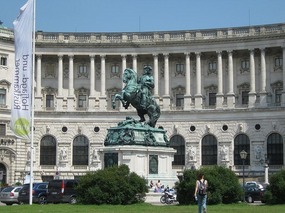









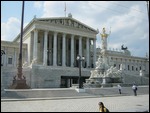

2025-05-23